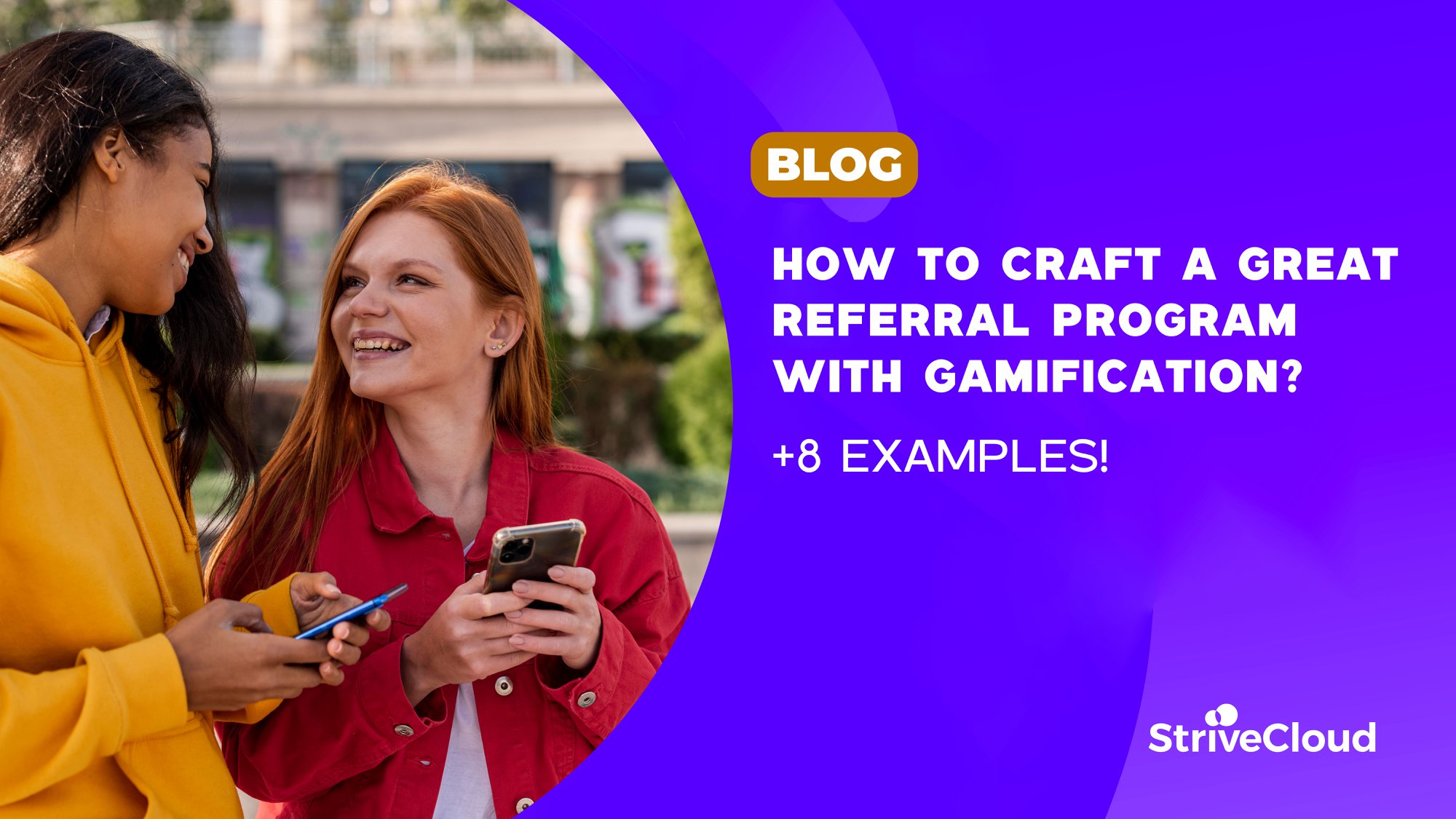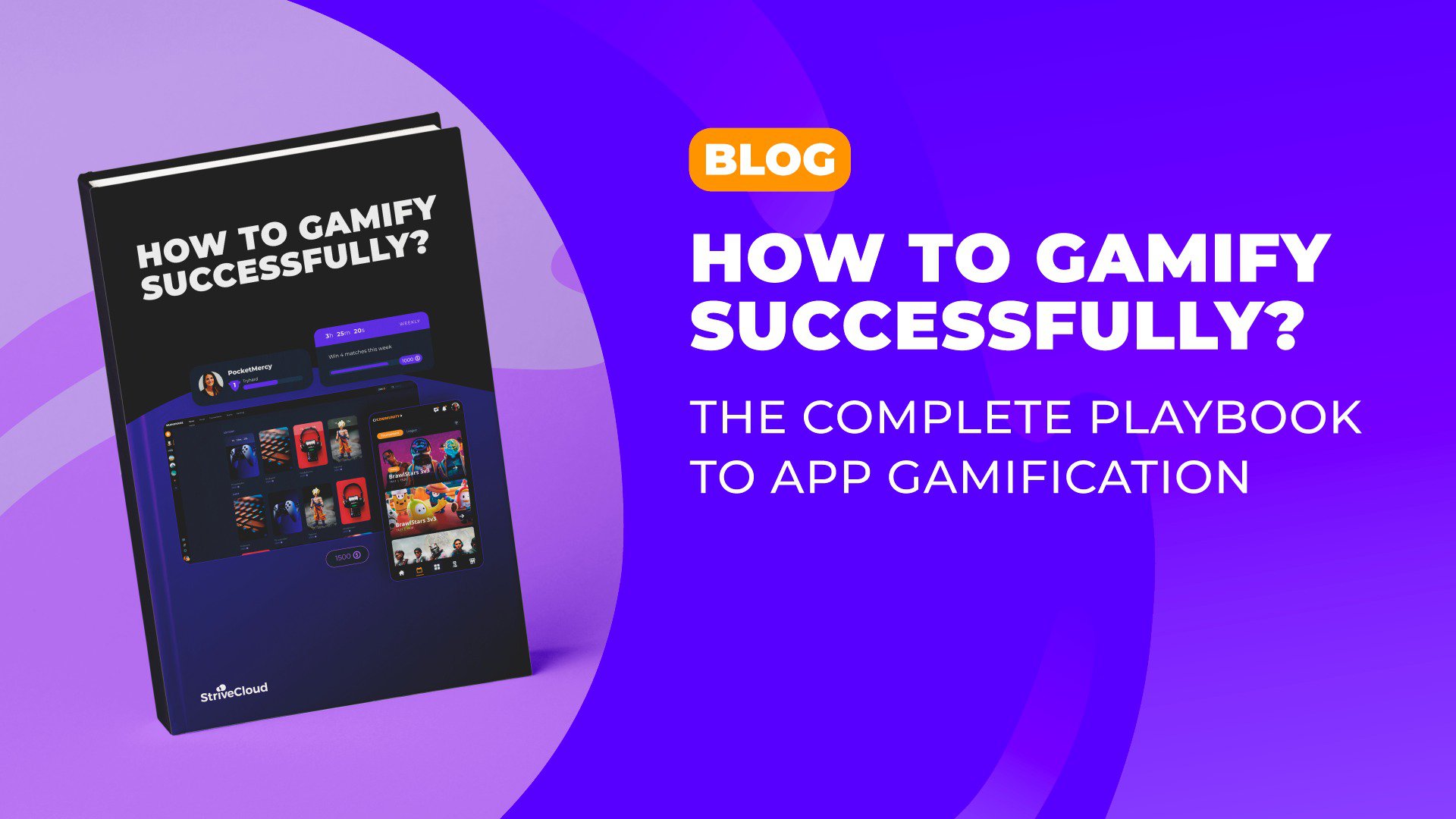Gamification for apps: 10 ways to drive engagement & loyalty
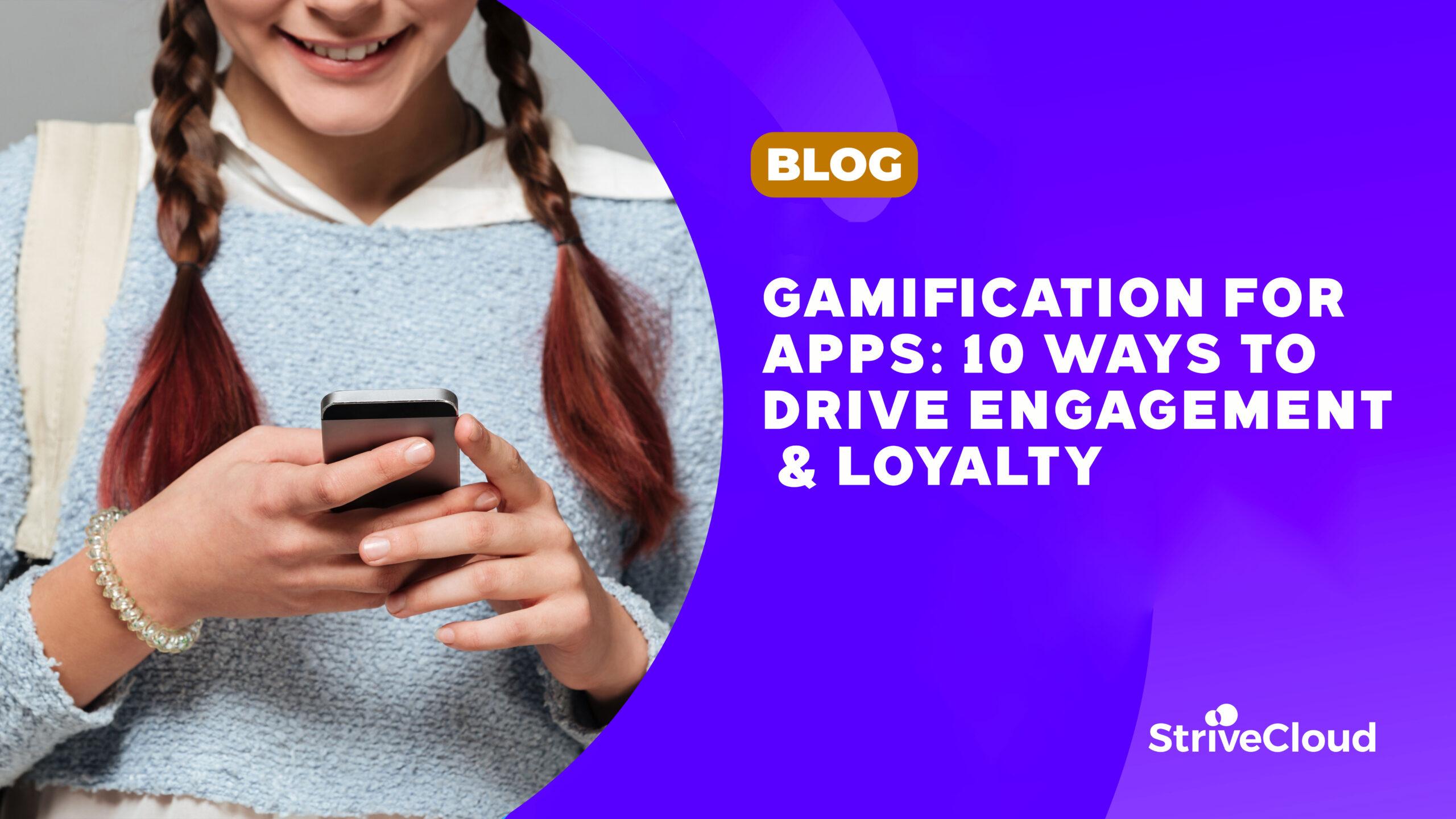
How game mechanisms trigger motivation?
There are two types of motivation that make people take action: extrinsic and intrinsic. Extrinsic motivators are often tangible or visible rewards to motivate participation in a task or behavior. Intrinsic motivation on the other hand is a drive that comes from within which relies more on emotions and desires. It’s when you complete a task because you enjoy the activity in itself. Game mechanisms are the game-elements that are applied in non-game context to nudge a desired user behavior.
Most apps today are already using some form of extrinsic motivators in the form of game-like elements such as monetary credits or freebies. While this can be a great way to trigger initial adoption, it can lose effectiveness over time due to the Overjustification effect and thus fail to keep users engaged over the long haul. You can trigger extrinsic motivation using Game Mechanics.
In order to harvest sustainable engagement you will also need a way to intrinsically motivate your target audience. You can drive intrinsic motivation by using Game Dynamics. One framework that is often used to understand intrinsic motivation is the Self Determination Theory. This theory relies on autonomy, competence and relatedness.
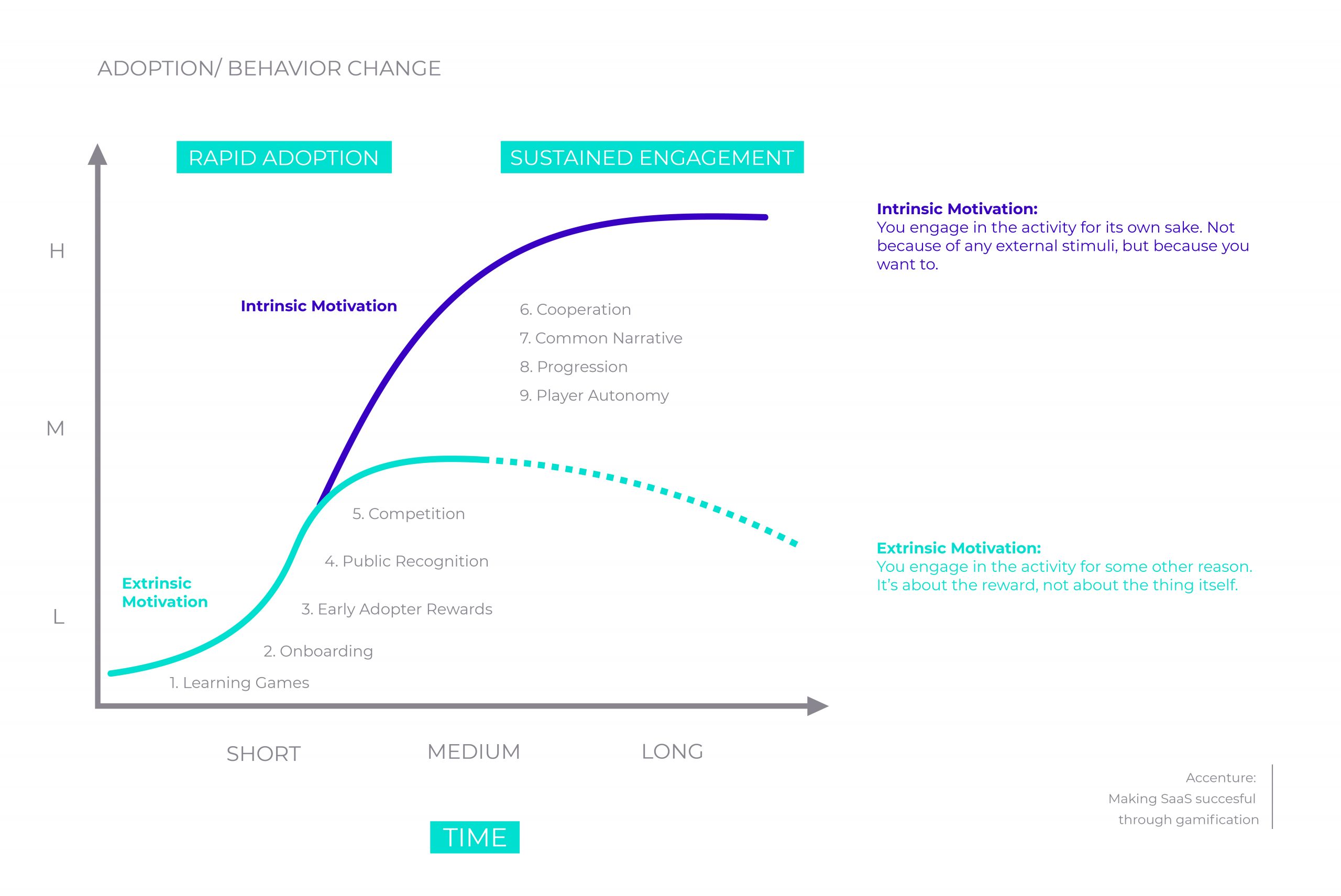
The most important Game Dynamics to engage your audience are:
- Relationships
- Accomplishment
- Empowerment
- Unpredictability
- Constraints
These are often supported by Game Mechanics such as:
- Points, Badges, Leaderboards
- Milestone unlocks
- Achievements
- Variable rewards
- Challenges
- Progress bars
- Notifications
- Social feed
How companies like Facebook create in-app engagement
We have already mentioned the Hooked Model by Nir Eyal in the article on How gamification drives engagement. This is a model that works on creating habit-forming apps or services with a goal of high-frequency engagement. Nir Eyal spent years in the video gaming and advertising industries, where he learned the ins and outs of behavioral psychology and motivation. Nir realized one of the biggest challenges in app development is continuous engagement. For most apps engagement is a direct indicator of revenue as the time users spend on the platform directly impacts the bottom line. Nir studied how some of the worlds biggest apps such as Facebook, Twitter and Youtube managed to get their users so engaged.
Steps to creating the Hooked Model
From the Hooked model, you can learn 3 important steps on how to motivate people and reward them: trigger, reward and engage users to participate in certain behaviors. The hook is meant to build habit-forming apps which we often use without conscious thought such as checking messages or emails. Every time a user goes through one of these loops, personal investment increases as well as engagement with the platform.
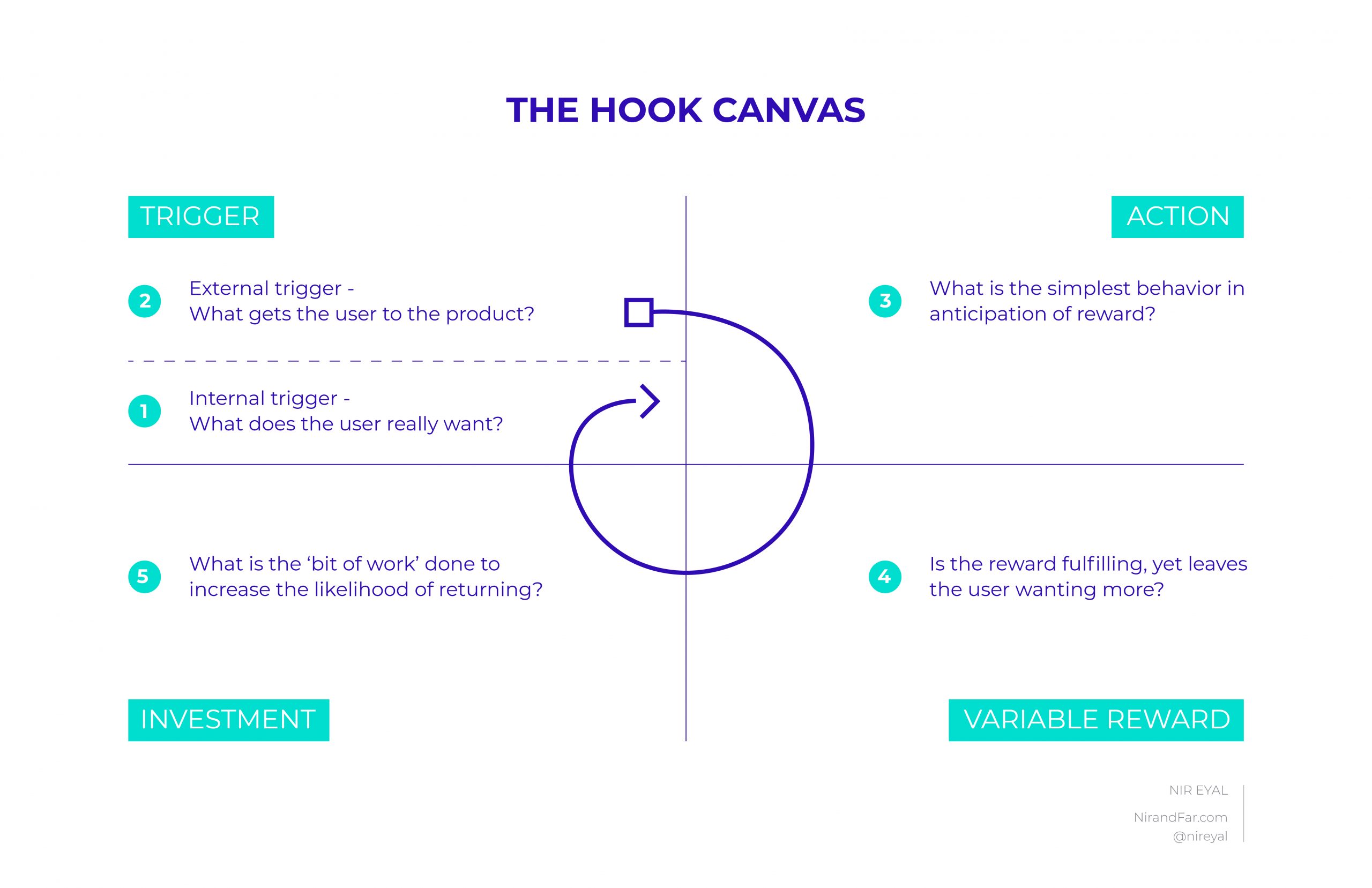
#1 Trigger
The trigger is what generates the desired behavior of your target group. In order for it to work you need both an intrinsic and extrinsic trigger. For example when you see a Facebook notification you are looking at an external trigger. This is a facilitating mechanic that moves the process forward. The urge to click on it and start scrolling your feed is the internal trigger. There are lots of motivational triggers which work on internal needs, drives and incentives.
#2 Action
In order for a desired action to be carried out, a few things need to be in order. According to B.J. Fogg, a behavior scientist at Stanford University, a user should have sufficient motivation, the ability to execute the action and a trigger. On Facebook that can be as simple as liking your friend’s post or even sharing your own thoughts.
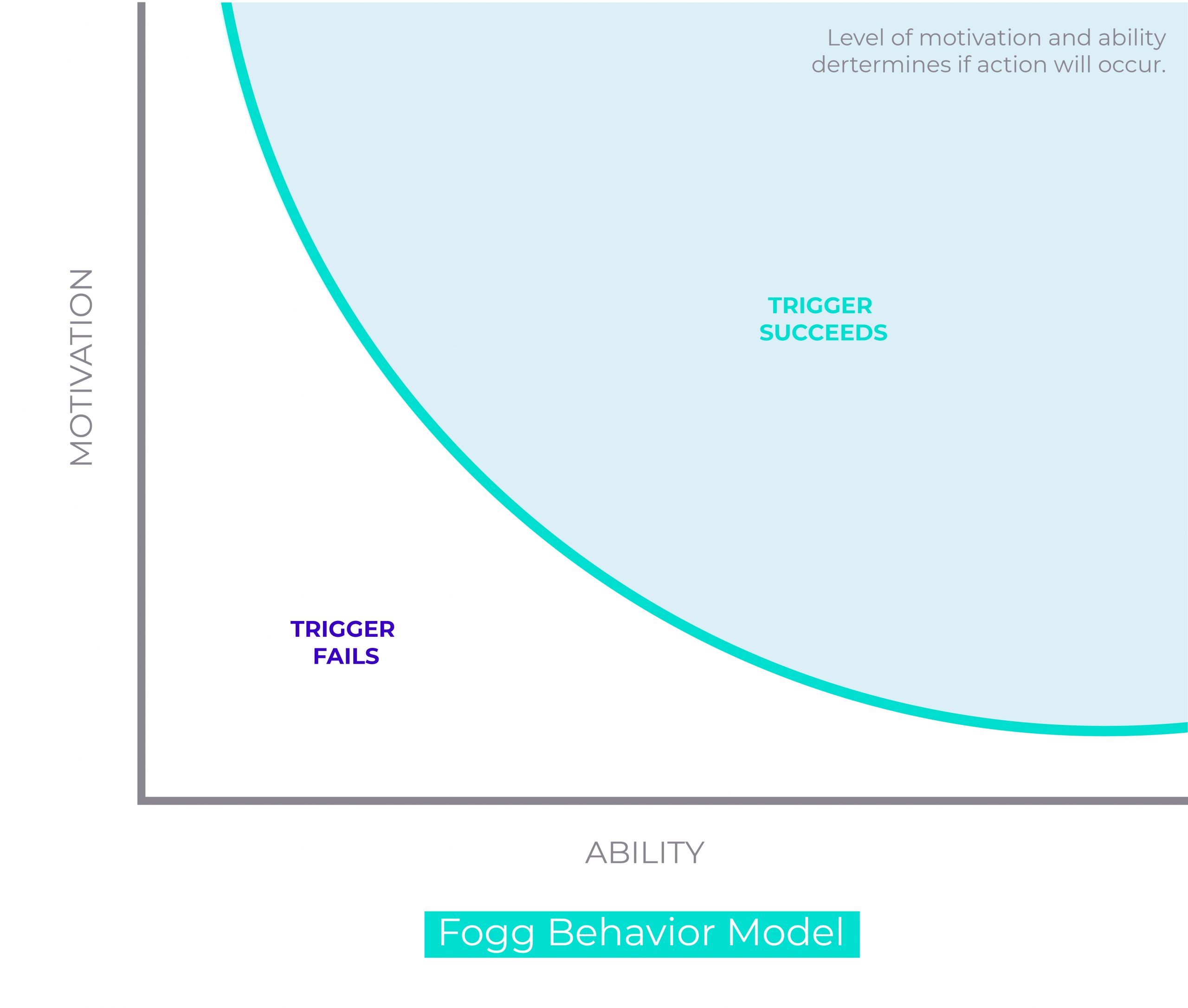
#3 Reward
While most companies today are already using some form of reward systems in both customer and employee engagement strategies, not a lot of companies are adding the element of uncertainty and therefore curiosity to it. Recent study in neuroscience found that making rewards variable skyrockets our dopamine and supercharges attention stating that it’s not about pleasure from a reward but the anticipation of pleasure. Gamified rewards, which introduce elements of play and unpredictability, have been shown to significantly enhance engagement and motivation by tapping into this anticipation. Evidently, they are a great solution in your Hook Model reward system.
However, gamification or not, we divide variable rewards in 3 categories:
1. The Tribe
Social animals as we are we clearly enjoy other people’s activity online. It allows us to fulfil our social needs and is fueled by our drive to feel connected with other people such as when people like your post and give you recognition.
2. The Hunt
When we’re on the infinite scroll, we’re unconsciously looking for ways to stay informed. This could be something like a news article or a funny meme which answers our need for unpredictability also referred to as Fear Of Missing Out (FOMO).
3. The Self
This leans heavily to the Self Determination Theory and its 2/3 core psychological needs: autonomy, and relatedness. On Facebook that could be as simple as going through all your notifications, or replying in a group chat on Messenger.
#4 Investment
Lastly there is also the investment. To create habits within your app, truly engaged users are a must. Therefore you need to give users the possibility of contributing to the platform. On Facebook you can see the investment as liking or commenting on a post or even contributing your own content. The more users invest into your app, the more prone they are to keep coming back.
Why companies fail in gamification for apps
Unfortunately not all companies succeed in applying gamification for apps. Back in 2014 Gartner reported that 80% of all gamification efforts would fail due to complexity of understanding human psychology. Below are some examples of successful companies that failed in gamifying their customer and employee engagement strategies.
Zappos is an online shoe store known for their brilliant marketing. That’s why it came as a big surprise when their effort to gamify their customer experience with a VIP program, it failed. Zappos created a reward system that gave out badges, points and levels. So why did it fail? All these gamification mechanisms didn’t have a clear purpose. You could not use it for anything and it didn’t motivate users to invest more into the platform.
Another example of failed gamification is the case of Omnicare. In 2013 the healthcare company Omnicom tried to reduce customer service wait times by implementing a leaderboard with cash incentives. The initiative backfired because employees felt monitored, leading to an increase in wait time and causing some staff to leave.
To successfully apply gamification into your app or platform to support your customer and employee engagement strategies, you need to clearly understand what motivates your user and make sure all game dynamics and mechanics are in order for it to work. That being said, gamification for apps can fail for a number of reasons. Some of the most common ones are:
#1 You put too much emphasis on your business goals
On one hand, yes your gamification systems are built to help you achieve business goals. Without it a clear gamification strategy can not exist. That being said, gamification is not only about rewarding users for carrying out behaviors. It is about finding the true underlying motivations of your target audience and then constructing a well thought out journey around it with game elements.
#2 The game has no purpose and your are only using extrinsic motivators
When people are not engaging with your gamification system something is wrong with your motivational design. If you are solely relying on extrinsic motivators you will be leaving out opportunities to engage with your audience over the long term. To establish sustainable employee or customer engagement you need to figure out the intrinsic motivations that help your users achieve their personal goals.
#3 You are using the wrong game mechanics
The intrinsic motivations of customers and/or employees are activated by a game mechanic. This is the external trigger we mentioned previously. Every mechanic is a vehicle that has the potential to trigger internal motivation. If there is insufficient internal motivation the user won’t participate in the activity. To succeed in creating lasting engagement you have to carefully pick which mechanic to use every step of the user journey, to keep your user move forward.
10 ways to drive engagement & loyalty with gamification
The truth is while gamification can be hard to implement, it has a major impact on your business and workforce.
“Vendors say gamification strategies can lead to a 100% to 150% increase in engagement metrics. “ – M2 Research
Let’s explore 10 gamification strategies that can drive user engagement and customer loyalty in marketing, providing real-life examples of how companies like Starbucks, LinkedIn, and Dropbox. You will learn the benefits of gamification in improving customer and employee engagement and retention rates, and how gamification in mobile apps can increase awareness, conversion, and usage. In addition, you will find out how through gamification you are encouraged to reward yourself for reaching milestones, fostering a deeper connection and sustained interaction with the app.
#1 Grab awareness with a quest
Perhaps one of the best known ways to apply gamification is in the awareness phase. Lots of companies host online competitions or giveaways. An amazing example of this is a game organized by Dropbox called Dropquest back in 2012. It consisted of an online scavenger hunt with a series of puzzles and challenges. If you complete the game you will get 1GB of free extra space, and if you had come in first you get 100GB free for your entire life!
#2 Use progress bars in your onboarding process
An all time favorite example of this is LinkedIn’s profile strength indicator. It’s an interactive tool that serves as visual feedback and natural human desire for progress. The bar also shows users suggestions to improve their profiles. It motivates members to work on their LinkedIn page in an easy and intuitive manner.

#3 Keep your customers engaged with redeemable rewards
This is a game mechanism that focuses on long term customer engagement strategies and addresses our motivational drivers to get instant feedback and collection. The Starbucks app is a well known example that rewards users during onboarding and throughout the lifecycle. Customers can collect points and later redeem them. It also allows for Starbucks to keep track of valuable data such as where, when and how often do their customers come to Starbucks and what do they usually order?
#4 Educate customers in a fun way
Spanish bank BBVA uses the BBVA Game to promote its online banking services. The game is a web application where customers can earn points for watching educational videos on how to make simple banking transactions, use the mobile banking app or pay taxes. These points can later be used for music downloads, movie streaming or variable giveaways.
#5 Add a sense of achievement with badges
Online review site TripAdvisor is spot on when it comes to giving instant feedback to their users which triggers their desire for empowerment and community. Contributors regularly receive emails letting them know how their reviews helped other travelers with carefully designed badges. They even go as far as to mail physical badges to top reviewers’ home addresses. That’s how you create true fans!
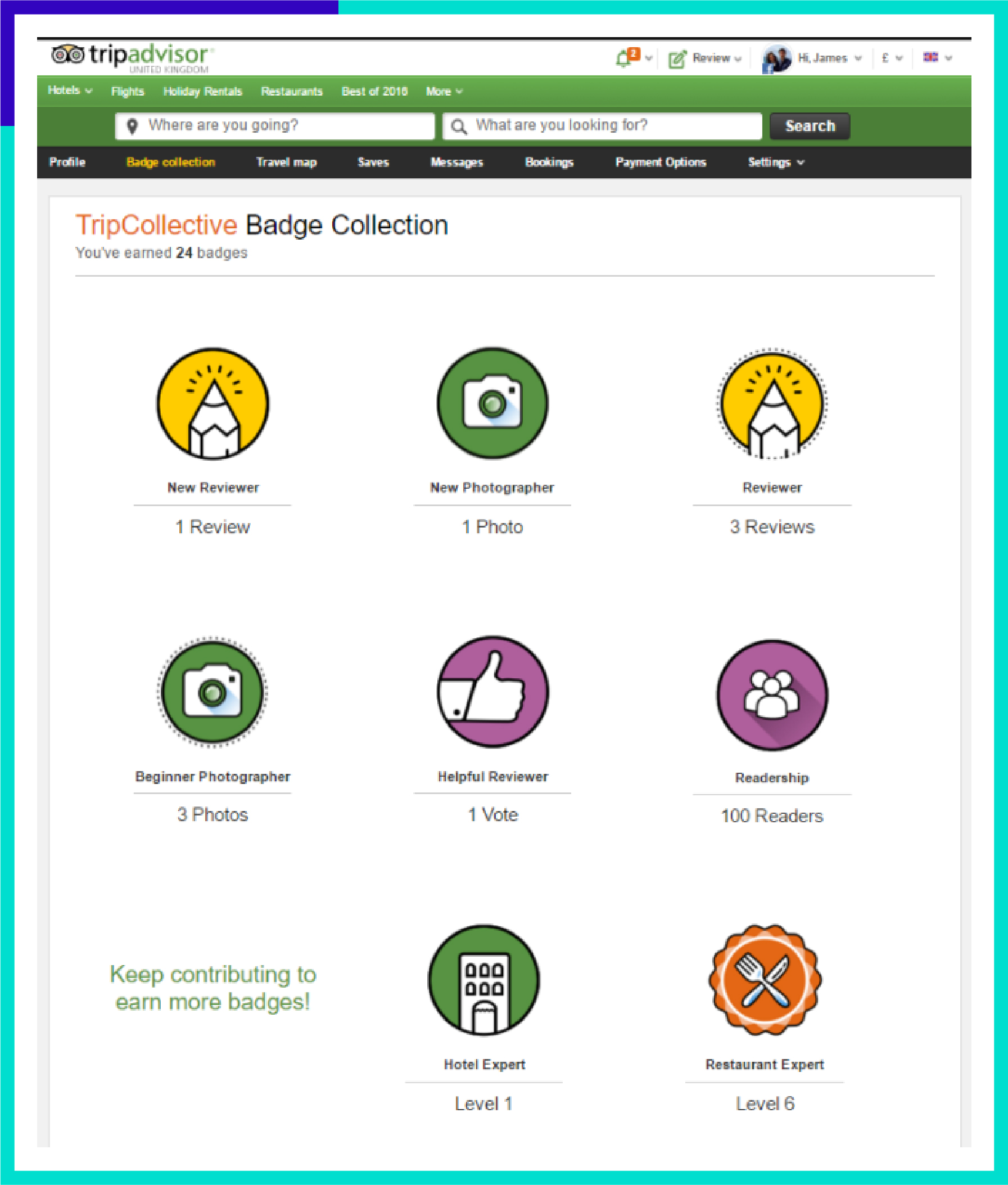
#6 Get your customers to the next level
We as humans have a great drive for achievement and progress. You can never underestimate the reward power! Adding milestones to a long term goal is what keeps us motivated and engaged in the first place. Navigation app Waze levels up its users with a point system that rewards and reinforces user generated content, helping them build out their product further.
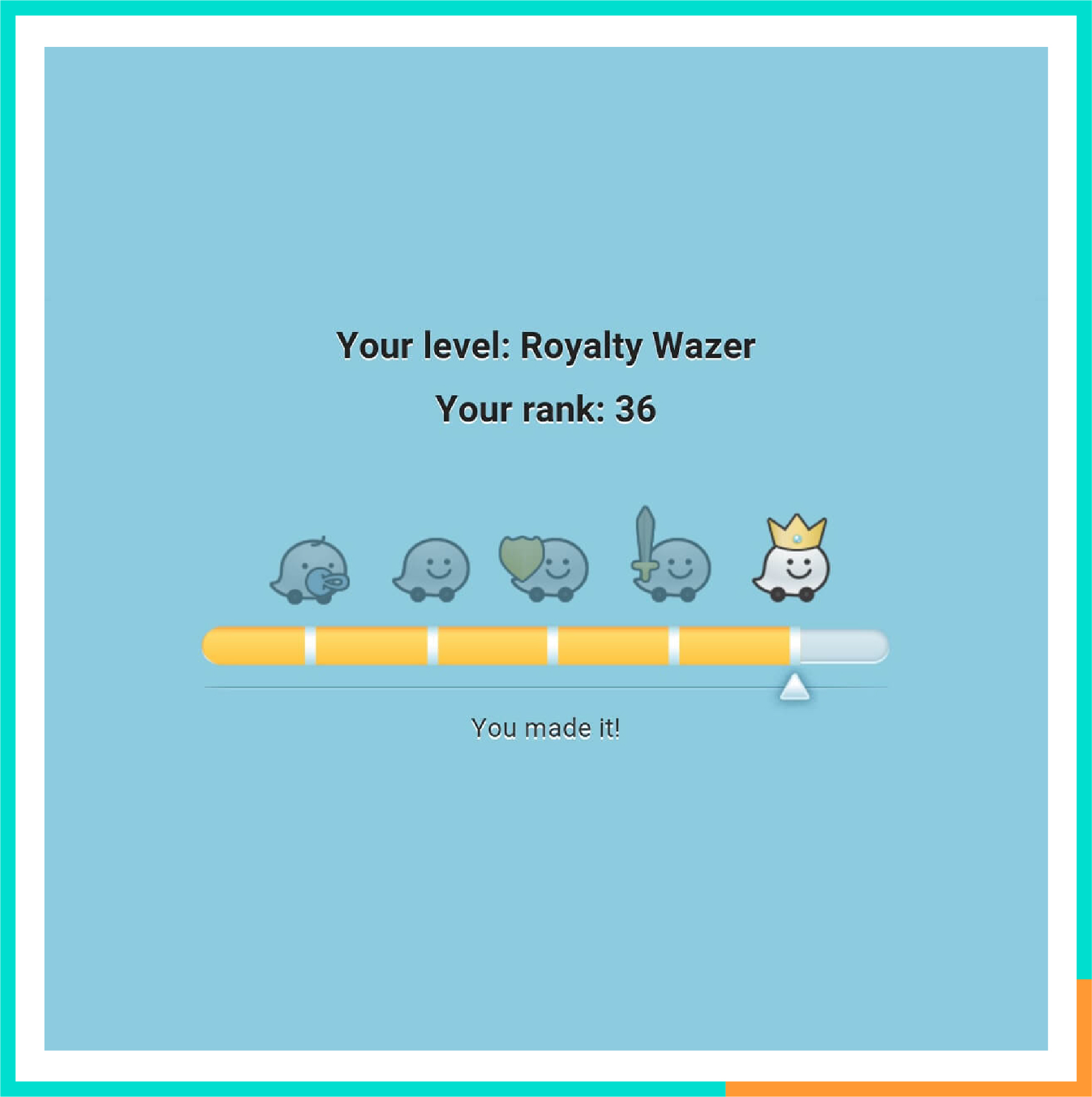
#7 Turn tasks into challenges
Language learning app Duolingo has frequent challenges to make their app more engaging. Completing a challenge definitely sounds better than doing homework. Besides the motivational drivers of exploration and autonomy Duolingo also adds a sense of competition and community with game mechanisms, such as leaderboards which has shown to increase app usage and adoption.
#8 Empower customers with instant feedback
Fitness app Fitocracy allows you to track all your health efforts and even provides a personalized nutrition plan with custom workouts to meet your fitness goals. With an in-app reward system, this app tracks progress and gives continuous notifications on progress, achievement and rewards to keep you engaged.
#9 Get your community to contribute together
Habitica is a gamified productivity app that turns your life into a game. With over 2 million users worldwide you can find people with common goals to work together which refers to the game dynamic of relationships linked to the motivational drivers of collaboration and community. This is a great example of how you can create highly engaging communities.
#10 Get creative with your recruitment
One of the most famous examples of gamification is the Multipoly by PwC Recruitment. It is a game that simulates the first year of work as an employee and has grown the candidate pool with 190%! The job candidates hired after playing the game said that the transition to the company was easier because of the game.
Recap
There is a true art in figuring out the motivations of your customers or employees and carefully designing a gamified experience around those to supercharge engagement. We learned that game mechanisms are the triggers for our motivation. External triggers are helpful for rapid initial adoption while internal triggers establish more sustainable employee and customer engagement strategies.
We know how the most used apps such as Facebook are using the Hooked Model in their user engagement strategies to continuously trigger and reward users to create a habit-forming product.
Lastly we provided 10 examples of game mechanisms throughout the buyer journey and common pitfalls to avoid when using gamification for apps. In conclusion, gamification for apps is shown to be beneficial in both customer engagement strategies as well as employee engagement strategies.
- Gamified apps have higher engagement
- Apps with gamification mechanisms have a higher retention rate
- App gamification can increase awareness and conversion
- Adding game elements in apps increase usage and adoption


